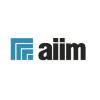- Resources
- Resource Center
The Intelligent Information Management Resource Center
Learn about trends in intelligent information management, benchmark your organization's progress, and understand critical next steps to move your organization's digital transformation efforts forward.

August 19, 2025
Exploring the Mechanics of Modern Content Management
This comprehensive guide reveals the critical technologies, strategies, and implementation approaches that are transforming how organizations manage their digital content and automate their processes in 2025.

August 13, 2025
Market Momentum Index: Intelligent Document Processing (IDP) Survey 2025
This groundbreaking research from AIIM and Deep Analysis reveals dramatic shifts in IDP adoption, implementation strategies, and market dynamics that are reshaping the industry landscape. Discover the Real Impact of AI in Document Processing Across 600+ Enterprises in 2025. Forget the hype—AI is now business-critical. Learn how industry leaders are deploying Intelligent Document Processing (IDP) to drive transformation.

August 7, 2025
Architecting for AI Success: Transforming Your Information Ecosystem for GenAI Value
In this webinar, you will learn how GenAI transforms your business by enabling accurate, contextual, and automated insights from expanding information assets, creating an empowered enterprise where all stakeholders thrive.

June 16, 2025
Unlock Long-Term Value from Your Microsoft 365 Content: eBook and Assessment
Transform your Microsoft 365 content into AI-ready assets with this free eBook and assessment from AIIM and Preservica. Eliminate data quality issues and unlock your organization's AI potential through better content governance. Download now to future-proof your content strategy and maximize your AI transformation efforts.

June 6, 2025
Member Only: Strategic Recommendations for AI-Driven Automation in an Unstable Economy
This Tip Sheet outlines how to use AI in organizations facing economic instability, shifting regulations, and growing legal and financial risks. It focuses on areas where complexity is increasing, and conditions are unpredictable.
Each recommendation includes three parts:
- What You Should Do
- Why You Should Do It
- How You Should Do It (Example: GIC)

May 21, 2025
Insight Webinar: Modernizing Government Information Management with AI and Automation
Government agencies face challenges managing information while meeting compliance. This virtual event shows how AI transforms public sector information management.

May 15, 2025
Knowledge Enrichment: Transforming Unstructured Data for Agentic AI and Intelligent Solutions
This guide helps information professionals identify AI-ready processes, ensure data quality governance, assemble the right skills, and measure implementation success while implementing Knowledge Enrichment methodologies that extract value from previously untapped unstructured content.

May 13, 2025
Adaptive Case Management: The Digital Revolution in Handling Complex Unstructured Tasks
Digital transformation has created extraordinary opportunities for organizations ready to embrace new paradigms. This must-read eBook reveals how Adaptive Case Management (ACM) delivers the perfect harmony between automation efficiency and human expertise.

May 2, 2025
Rethinking the Role of Mainframe Data in Enterprise AI and Analytics
Enterprises are sitting on a goldmine of insights locked inside legacy systems—discover how forward-thinking leaders are transforming their mainframe data into real-time, AI-fueled intelligence without disruption. Download this report to unlock how your organization can join the ranks of companies leveraging decades of enterprise data for competitive advantage in today's AI-driven marketplace.

May 1, 2025
AI+IM Global Summit 2025: Compendium of Key Learnings and Actionable Insights
The AI+IM Global Summit Compendium captures key insights from the inaugural March 31-April 2, 2025 Atlanta summit that brought together information management practitioners, technology leaders, and industry experts to explore the transformative intersection of artificial intelligence and information management.
Through four learning pathways covering artificial intelligence, workflow automation, intelligent information management, and leadership, the Summit addressed critical challenges in the AI era. The compendium distills essential findings including the accelerating convergence of data management disciplines, the paramount importance of information quality for effective AI implementations, the continued necessity of human-centric approaches to AI adoption, the challenge of balancing compliance with value creation, and the effectiveness of practical, phased implementation approaches.
Featuring workshops, interactive sessions, keynotes, and peer-to-peer learning through industry-specific cohorts, the Summit provided actionable strategies for leveraging the 80-90% of enterprise data that remains unstructured while maintaining robust governance frameworks, making this compendium a valuable resource for information leaders at any stage of their AI implementation journey.

April 23, 2025
When Messages Self-Destruct: The Hidden Risks of Ephemeral Communication for Information Governance
Encrypted, self-deleting platforms like Signal and WhatsApp are rewriting how professionals communicate—often beyond the reach of your information governance framework. This must-read white paper, authored by ECM pioneer John Newton, exposes the real-world risks of ephemeral messaging and offers actionable steps to safeguard transparency and compliance.

April 21, 2025
Microsoft Purview Compliance Quick Start Guide: 5 Essential Steps
Master Microsoft Purview compliance in days with our 5-step guide. Practical implementation steps, troubleshooting tips, and a proven timeline for IT and compliance professionals.